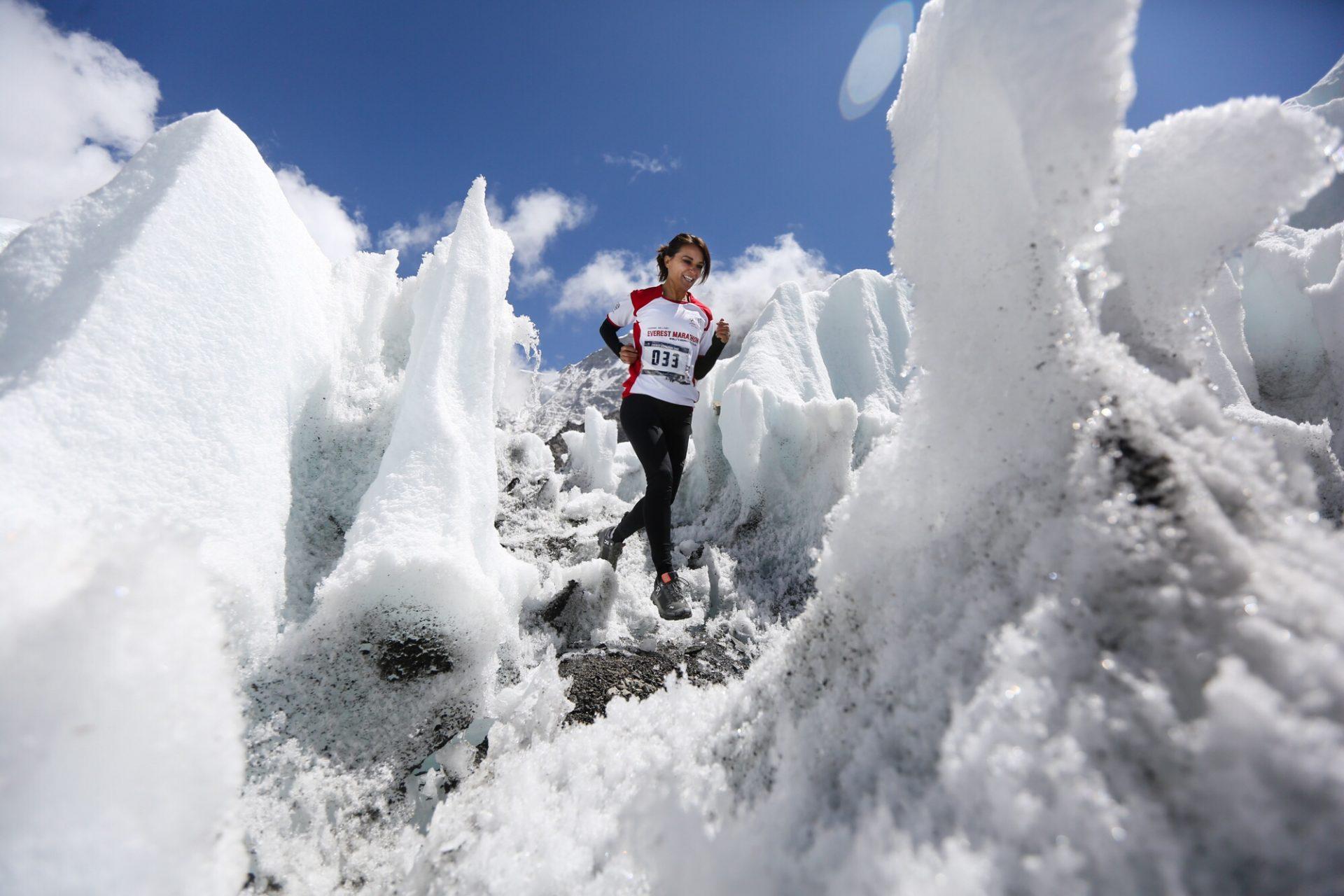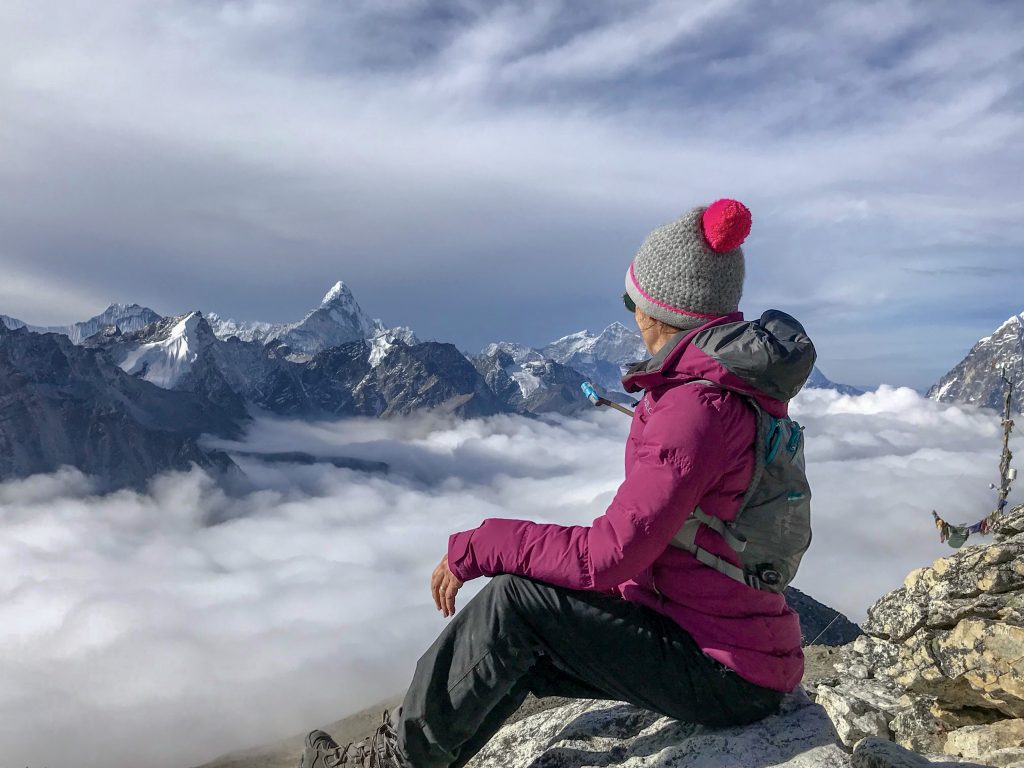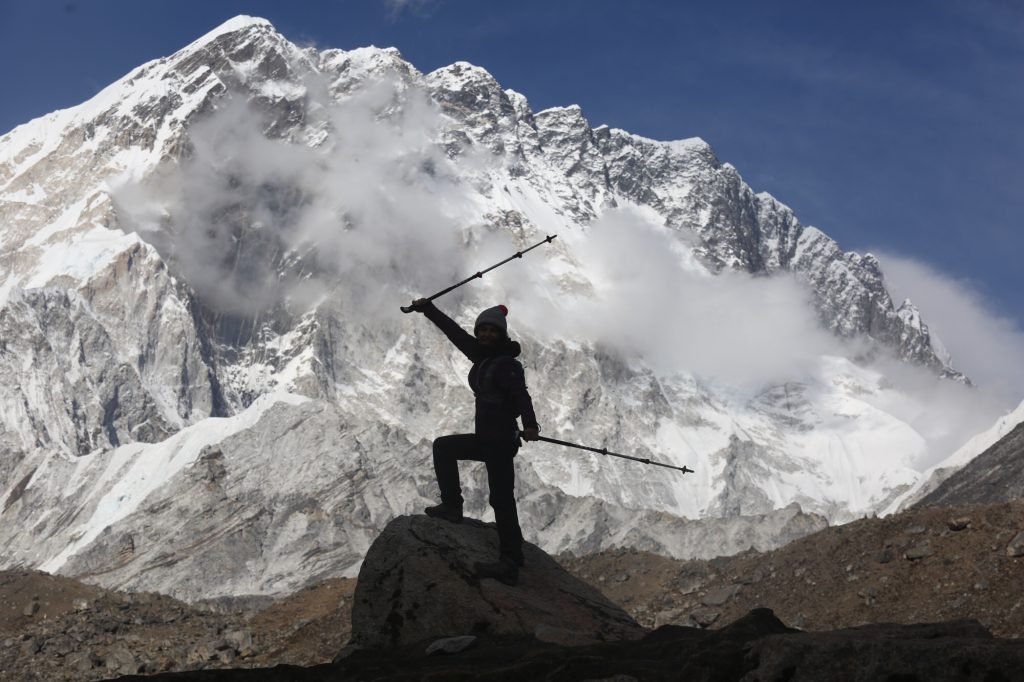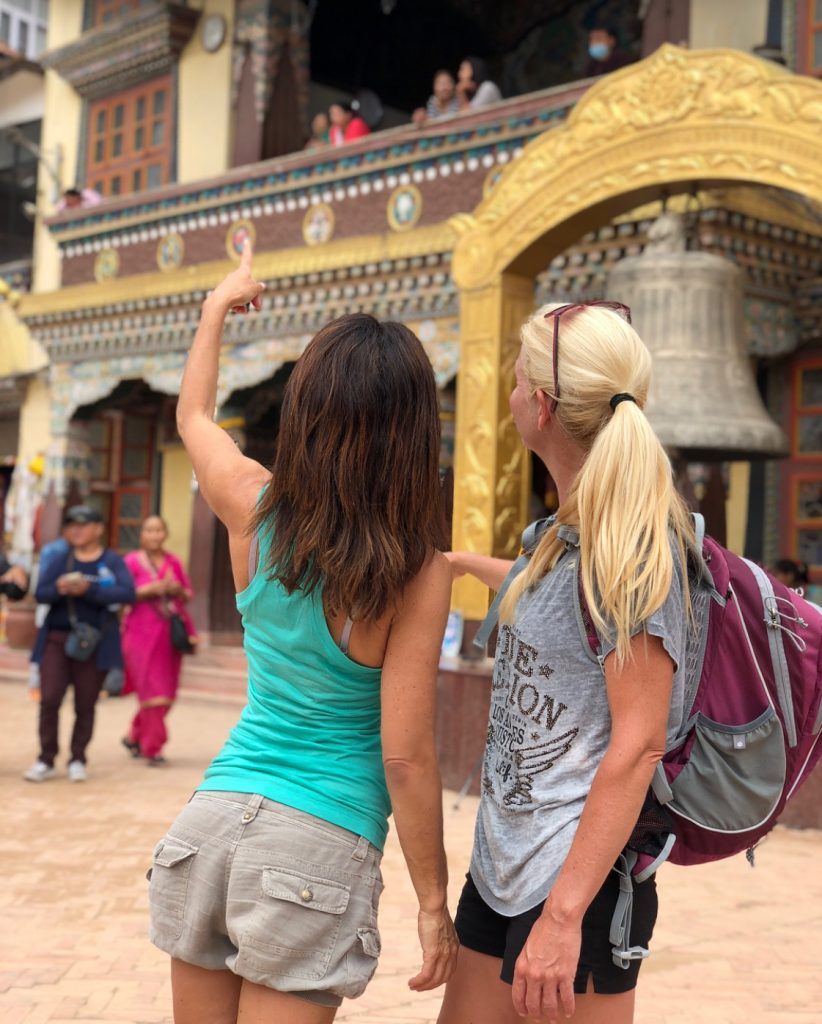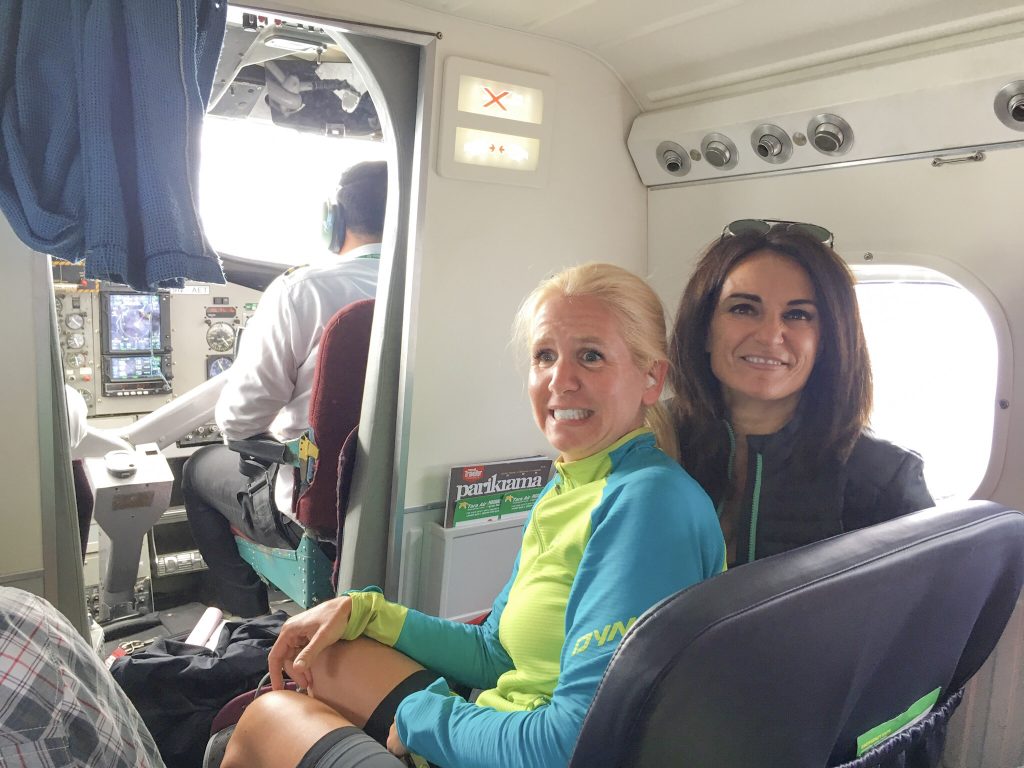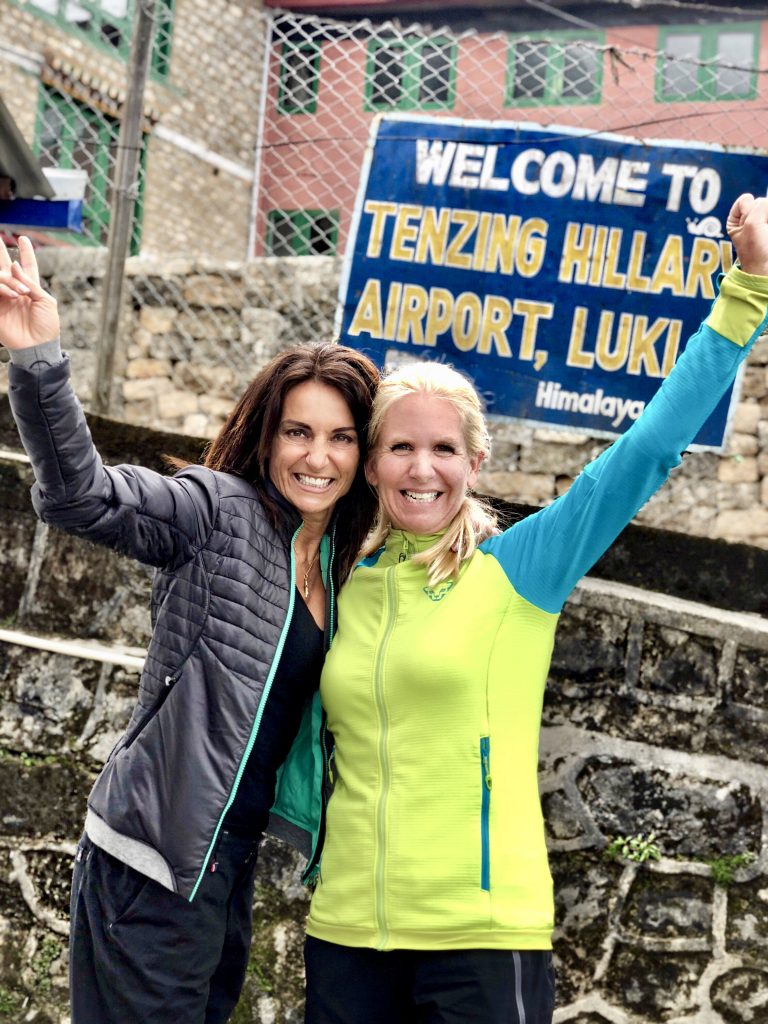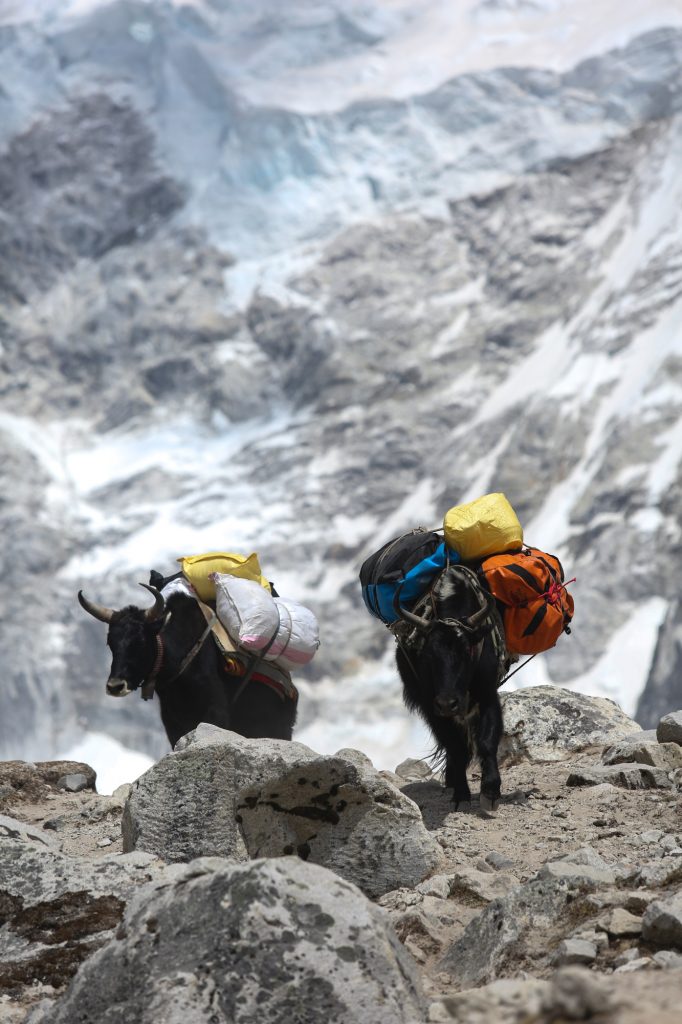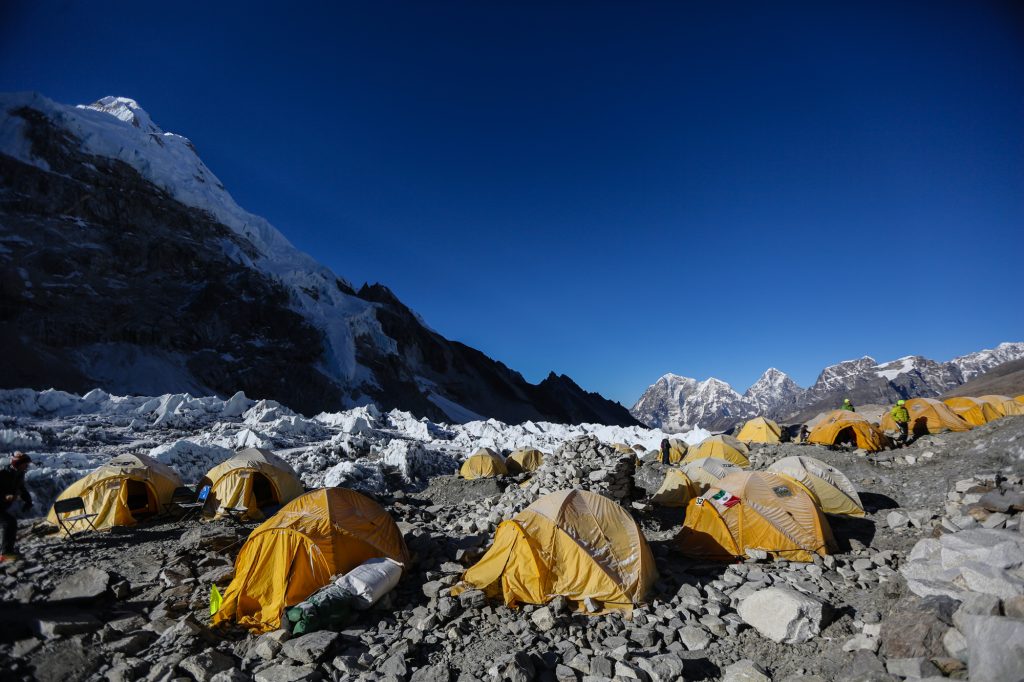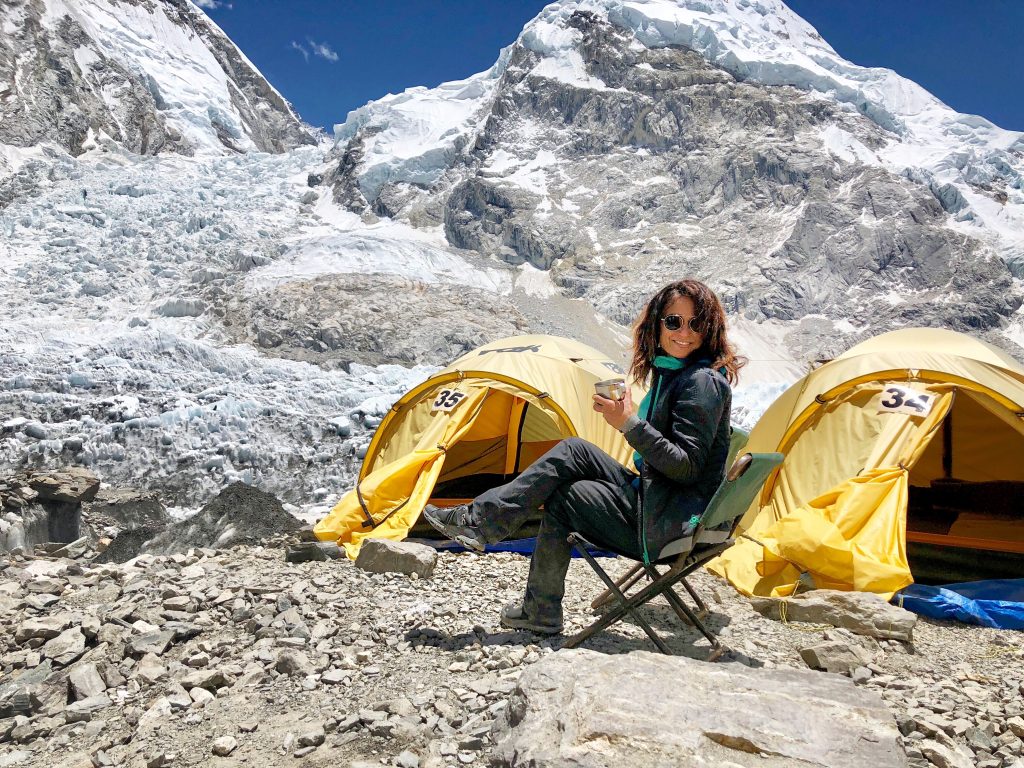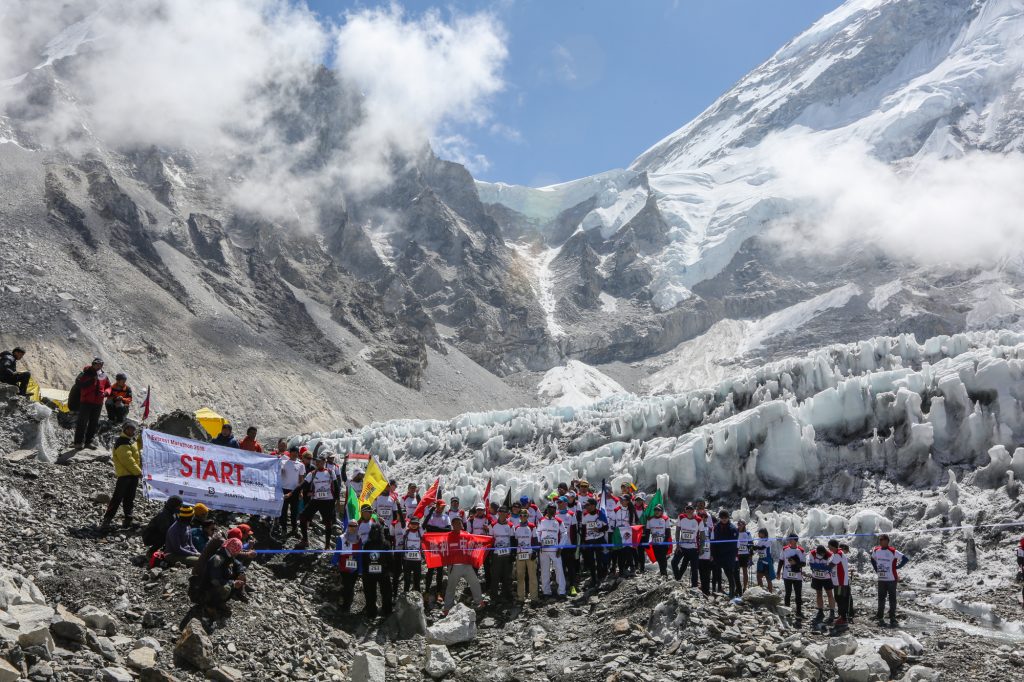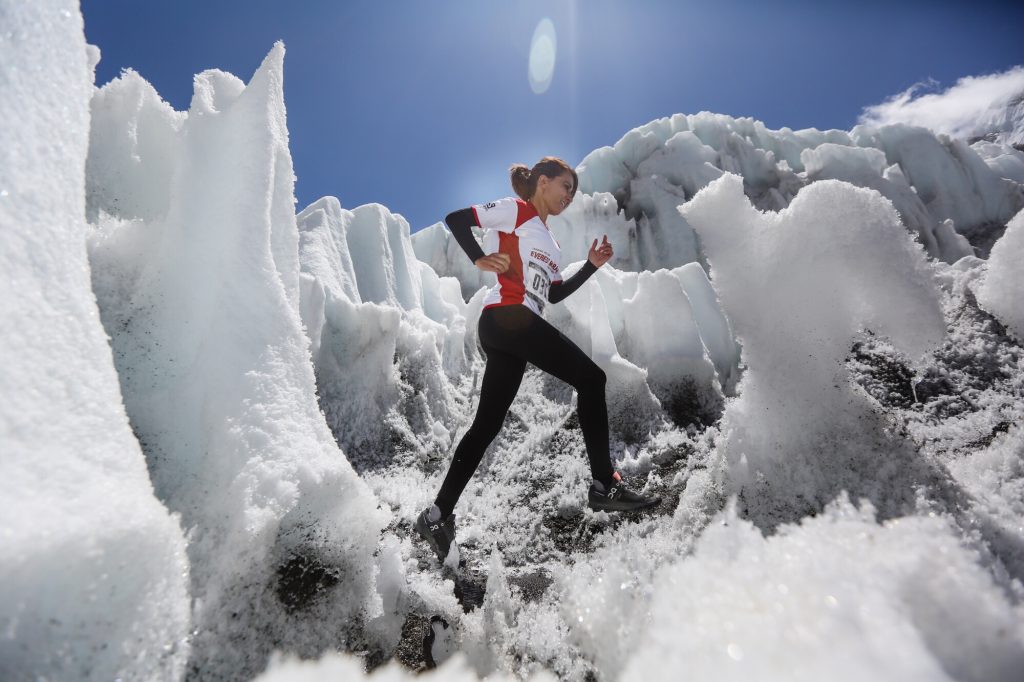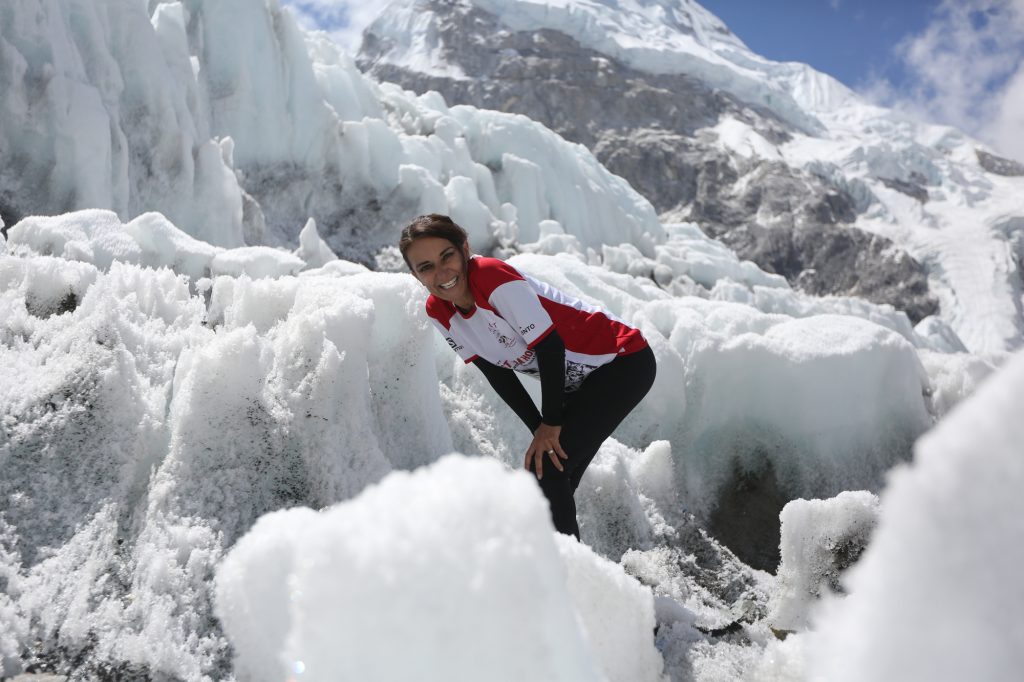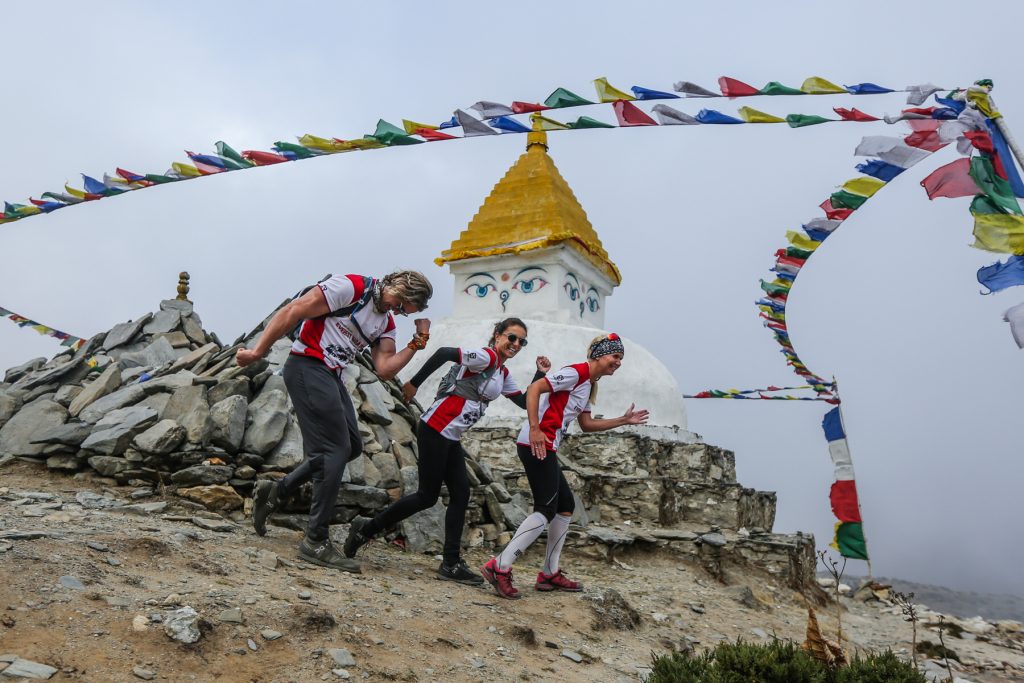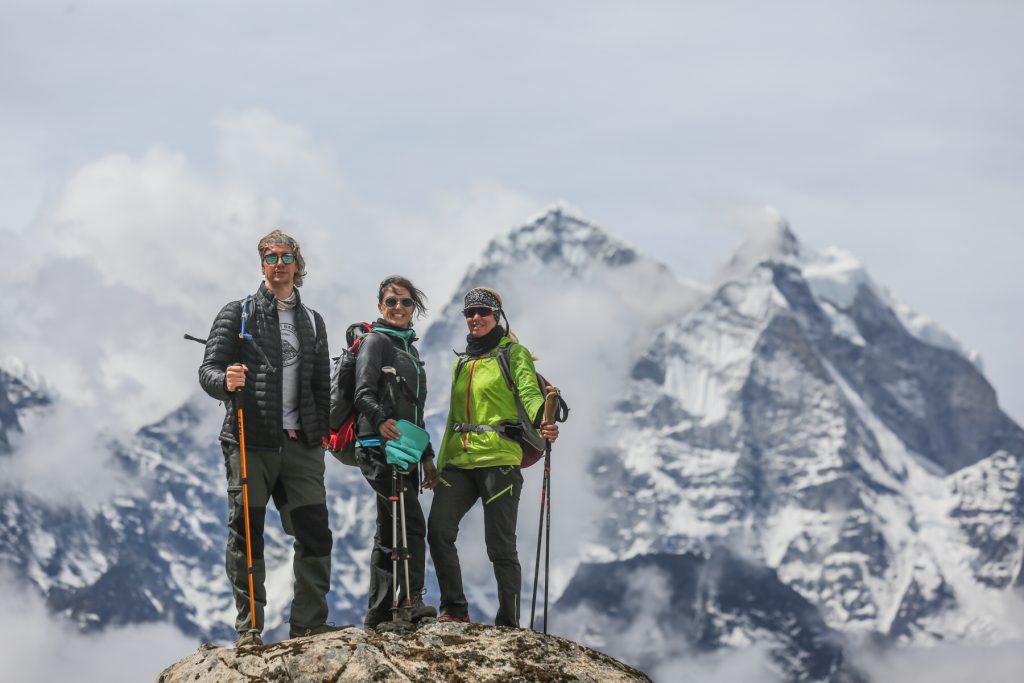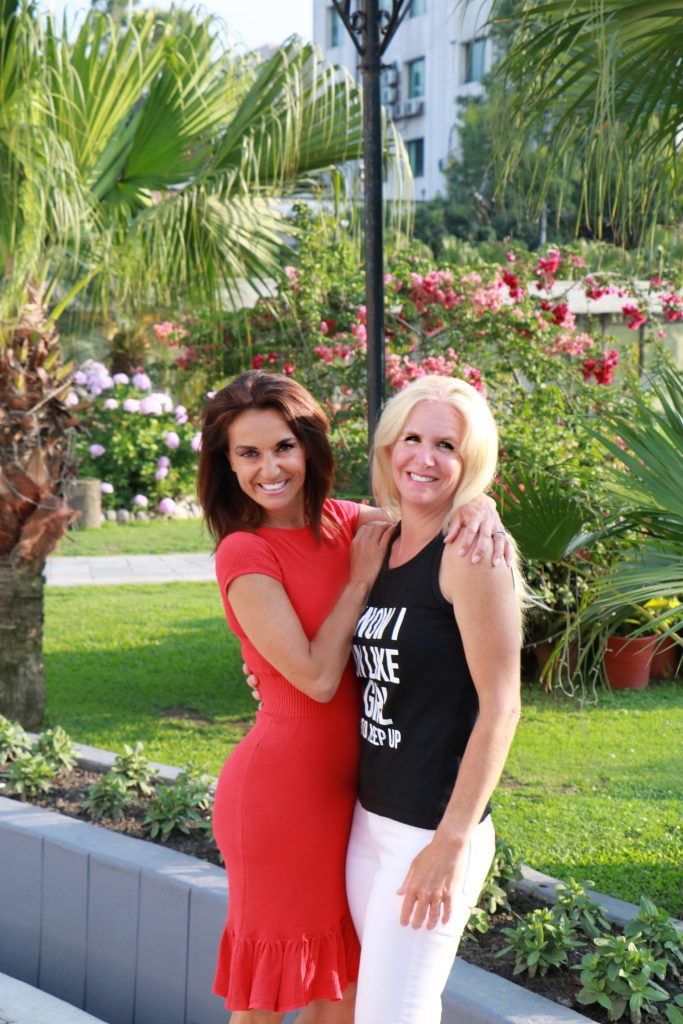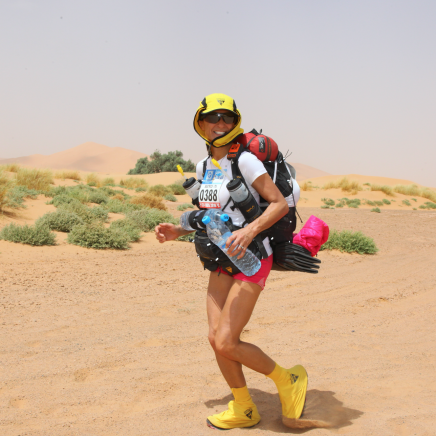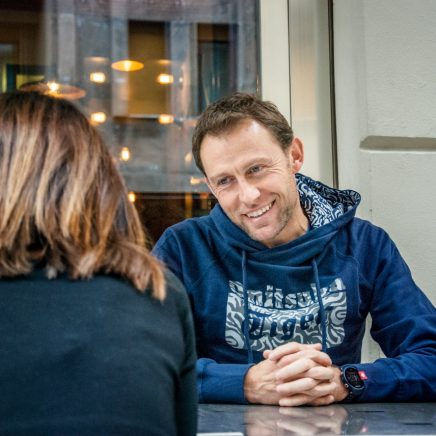Everest Marathon – The World Highest Marathon
On Top of the World
You can’t run higher than this: Everest Marathon is an international high altitude adventure sports event held from mount Everest Base Camp (5’335 mt/17’500 feet), criss crossing the high Sherpa trails of Khumbu Valley and ending up at Namche Bazar (3’440 mt/11’286 feet).
That means that runners first hike up for two weeks – which is the perfect amount of time to acclimatise and as intense as the race itself – then reach the highest point, Mount Everest Base Camp, and finally run “down” during the marathon. Even though the running down has an elevation of 2’700 mt and feels quite hard, I tell you.
But one thing at a time. First of all, the reason why I run Everest is that Holly, my companion of running adventures, asked me to.
(Photos: Ayush Bista, @bista2yush and Anuj D. Adhikari, @anuj.d.adhikary)
What Do You Need To Know To Run Everest?
I accept Holly’s idea without reading the race program. Just to make clear that I am really no expert: I come from Tuscany, from a small village at sea level. My camping abilities are close to zero – my only preceding experience being Marathon des Sables, in the torrid heat of the Sahara, which isn’t exactly Nepal. So I was totally unprepared.
If someone like me can manage to run Everest, it’s because physical preparation counts to a point. What mainly counts is your mind and how badly you want to finish.
Don’t Mess With Altitude
Having said that, Everest Marathon does present a rather unique hurdle, and that is altitude. During my three weeks stay, I see many sick people taken away with the helicopter, being given oxygen or carried down the mountain with a horse. The long hike before the race can be tedious, but it’s exactly what the body needs to acclimatise. If you try to go up in a shorter time, chances are that you won’t manage – last year a Singaporean woman died of altitude sickness so the issue is not to underestimate.
Following the organisation’s instructions and guidelines is paramount. A doctor is hiking up with each group of 15 people. Medical checks are performed and instructions given. Tips include:
- hiking up for two full weeks, not shorter
- drinking at least 4 liters of water a day, especially when using Diamox (a drug to prevent altitude sickness)
- going about 200 mt higher than where you will sleep, stay for at least 20 minutes, then going back down
- watching out for high altitude sickness symptoms like strong headache, diarrohea, lack of sleep, lack of appetite – and reporting them
- no napping in the afternoon
- being positive and not worrying too much about headaches – stress doesn’t help at all
Personally I experienced all typical symptoms during the whole hike, but in mild form. One day my stomach was upset, I was sweating cold and felt very close to fainting. I was going to ask for help and tell everybody to stop, when our guide did stop, without me saying a word. I was so relieved, that collapsed on a stone and started to sob uncontrollably. A sherpa saw me from far away, came to me and hugged me. It was the best anti-altitude medicine ever.
Start in the City
And now back to the beginning.
The official program starts in Kathmandu, with a day in the city, then a meeting with the local press and a briefing by the marathon organisation. Rules are explained, introductory questions answered. Everybody is thrilled and looking forward.
Finally it’s time to go up, and for that you need to fly to Lukla.
The Most Dangerous Airport in the World
We have noticed that foreign people get really stressed at Lukla, because of flight cancellations
Says the marathon program.
You western people should learn something from Nepali: patience
Adds our fabulous guide, Ricky Yonzon.
Here’s the issue: the weather in Lukla, the gateway to Mount Everest, changes all the time (and I mean every minute). Visibility is a challenge and getting up at 5 am to fly and waiting for hours or being canceled is standard procedure. There is only one tiny landing strip in the airport and it’s often in the clouds or fog. A heart-stopping video of a recent plane crash there is widely available in the internet. Not the best introduction for Holly and I to be relaxed the day of our flight.
We wait for 6 hours, finally take off in a very mixed weather, and five minutes before landing…we have to head back! We try our best not to be tensed and accept events without a comment. After landing back where we started, the pilot tells us to to go a tiny restroom right across the landing strip (I guess that’s what western people need all the time when they experience Lukla flights) while he re-fuels the tiny plane, so we can start allover again. Two hours later we take off once more and, after circling for a while near our destination, finally find an opening in the clouds. We land! Phew…!
Now I know why a program titled The Most Extreme Airports named Lukla the most dangerous airport in the world.
Hiking Up
Time to hike up to the Marathon start.
Ready, steady, go! It’s the first time in my life I use trekking poles and I don’t feel exactly comfortable. After one minute, I cut my finger with one of them and start bleeding much more than normal, because of the altitude (I know we are “only” at 3’500 mt and going much higher, but my blood seems to feel the difference already). So here I am, sticking my finger in the air to limit the bleeding, asking for help because I don’t have a plaster.
You don’t have a plaster?
Asks a fellow runner, looking at me like I am an alien.
Hmmm, no. Forgot the First Aid kit in the big bag.
Then it starts raining and all the content of my backpack gets soaking wet – half of it ruined.
After the first day, the lesson is: Everest Marathon isn’t about running. It’s a whole body management experience. I better learn quickly.
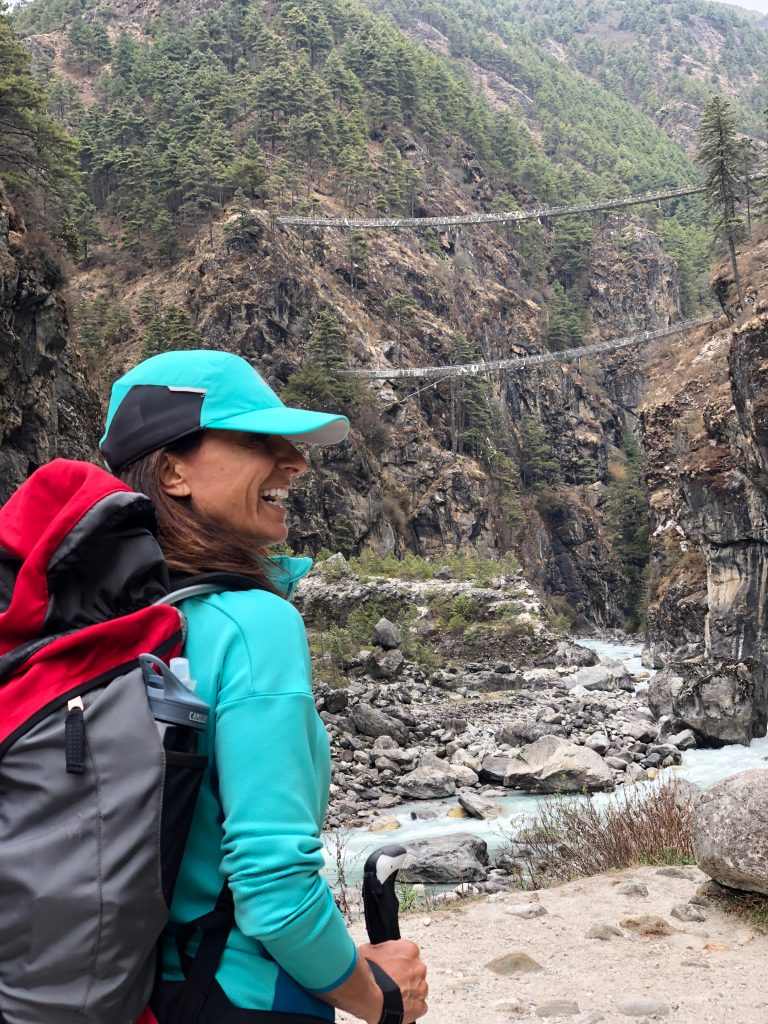
Starting the trek: here in front of two of the iconic suspended bridges in Nepal. You better not be scared of heights!
Tea Houses
Two weeks hiking are a wonderful way to get to know the Khumbu Valley. The iconic suspended bridges, the fabulous views, the Buddhist Temples, the rural villages, the sherpas carrying up to 100 kg on their backs while you struggle just to walk, the beautiful animals helping humans so much, and the stars of the mountain – domestic Yaks – become a comforting presence in your trip. You start getting accustomed to the food (mostly rice and curried vegetables; and a lot of potatoes), to walking on the left side of any Nepali sculpture (going to the right is considered total lack of respect), and to breathing very hard as soon as you attempt running, jumping, kneeling down or even singing.
At night, you stay at lodges/tea houses. They are welcoming and friendly, but don’t try to compare them to western standards.
They are freezing. Dark. Common toilets are filthy. Flushing is a luxury. You can’t throw anything in so all dirty toilet paper is collected in a big open basket for everybody to see, and smell. Showers are outside and make you fearful of catching some illness. Heating is only in a common dining room, two hours a day, from 5 to 7. After passing the tree line – when there is no wood anymore – this is done by burning yak’s dung. During the day, it’s common to see ladies collecting excrements with their bare hands.
If you are like me, and used to a different style, forget water and soap (there aren’t any) and simply bring a lot of wet wipes and disinfectant. I didn’t know how rough lodges would be so, once more, I was unprepared and had just the minimum – Holly and I spent a lot of time squeezing the last drop of disinfectant from another little bottle, and talking to our anti-bodies to convince them to work well.
Base Camp Highlight
Staying overnight at Base Camp is not allowed to tourists, so the chance that is given to marathon runners is a one-in-a-lifetime experience.
After so many hiking days, it’s so exciting to be here, healthy!
The first thing I notice are ladders on the ice – yes, like you go painting a wall. Then I see what people do with them: crevasses crossing. Man, did that look scary.
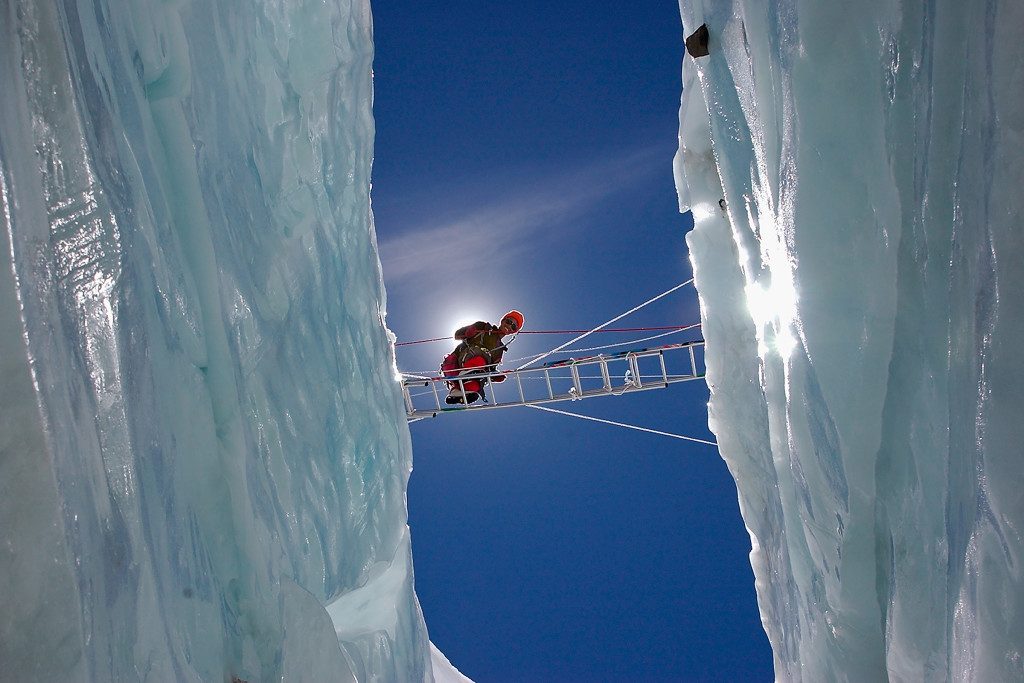
Ngawang Sherpa crosses a massive crevasse on a ladder; at 18,000 feet in the Khumbu Icefall, Everest, Nepal. Photo: schustergrouone.com
After that I hear a thunderstorm and think the weather must be changing – as usual. But no, this time it’s an avalanche. The mountain is crumbling down, help! Some “locals” looks at it in a totally relaxed way, and one guy says:
Oh, that’s lucky…nobody is there. If it was a bit more on the left, it would have killed someone.
I really wonder if I should call the helicopter and go home.
One night I get out of our tent to pee, at minus 15. While freezing and walking on the ice half asleep, I ask myself:
why the hell did I come here?
Then I look around. The mountains are shining in the dark because of the ice, the stars fill the sky without any pollution whatsoever. A 360 degrees incredible view makes me feel so small, and yet so intensely happy. This moment is worth the whole trip.
The Marathon
It’s finally marathon day.
Really, Everest Marathon is an ultra – no foreign runs it below 4 hours.
A very cold start under the Khumbu ice fall, some surprisingly flat parts on some incredibly steep and beautiful sunny trails, then all the weather and surfaces you can think of in the space of a day make this race unique and deeply challenging. Stones, water, ice, sand, steps, roots, uphills, downhills, wind, sun, rain, fog, clouds…a mind-boggling variety of terrains and landscapes complete the experience.
By marathon day I am used to letting animals and sherpas the way: when they arrive, I quickly go to the mountain side (I sure don’t want to be on the other side!) and wait until they have gone. Patience is easily learnt, in Nepal.
I get lost twice, but only for a short time. I sprain my ankle lightly, stop for about 20 minutes fearing to be out of the race, swallow a pain killer and start again.
Think positive, think positive, think positive
I say to myself.
Because of the altitude, the physical effort starts at maximum level, but as you approach the second part of the race, oxygen starts increasing, and the feeling of decreasing fatigue is a fantastic bonus.
Wow, I am really doing this. I am strong enough!
I think.
At the loop I see Holly, very fresh and going strong. It is a fantastic day.
Results
After 9 hours 21 minutes, I arrive at finish line with a heart full of emotions. I feel wonderful.
I made it, I made it!
I end up 16th among all women.
Later on I get annoyed because there is no age group chart, and I have seen no 50+ woman before me. There is no way to check the start list and the year of birth of women. Nepali technology is not like Swiss one, yet.
Holly is first of all international women. Also annoyingly, her result is changed the day after, when a Nepalese woman is mysteriously added before her. But hey, she is still the winner of foreign women. I am proud and very happy.
Everest Marathon prolongs the trekking season and has become an important platform for international charities. It has brought money and awareness to the region and is indeed outstanding. I hope the organisation will fix these aspects that risk to ruin the excellence of the race.
Holly and Sean
A final point that is very important to me.
Many followers and friends ask me: what did you like most about Everest Marathon?
What I liked most was the people.
Yes, nature was stunning, and the mountains took my breath away, in every sense. But what I loved most was seeing how strong, humble and friendly the sherpa people who carried our luggage and served us food every day were. How helpful the whole team and organisation was. How fast and understanding they were, seeing from far if anybody had a problem or a health issue – which was often. How Ricky (our guide) was always there for us, informative and proactive. How the doctor walked every day with us. How Nepali people didn’t get annoyed by us weak, spoiled, naive, prone to illness and to tears, whining foreigns. They kept helping us with a smile.
Last but not least, I finished the marathon thanks to Holly and Sean‘s company, encouraging words, silly jokes and high spirits. Check out Sean’s Instagram to see why I liked him immediately: twice Pro Fitness World Champion, he is incredibly good-looking. But his personality is what striked me most, and he was a lovely addiction to the “Bea and Holly/Salt & Pepper” Team. I am a positive person and can stand suffering. But I need loving people around me for that.
As for Holly, I already knew from our desert experience how sweet and generous she is. A strong runner and a great girl who would never let me down – when I was in tears, she immediately got all my stuff and carried it until I was able to do it myself again, for example.
It was a huge pleasure sharing this experience with them. In the end, what makes you happy is the people you love – even on the highest mountain in the world.
All my outfits are by Odlo. Shoes: On-running







